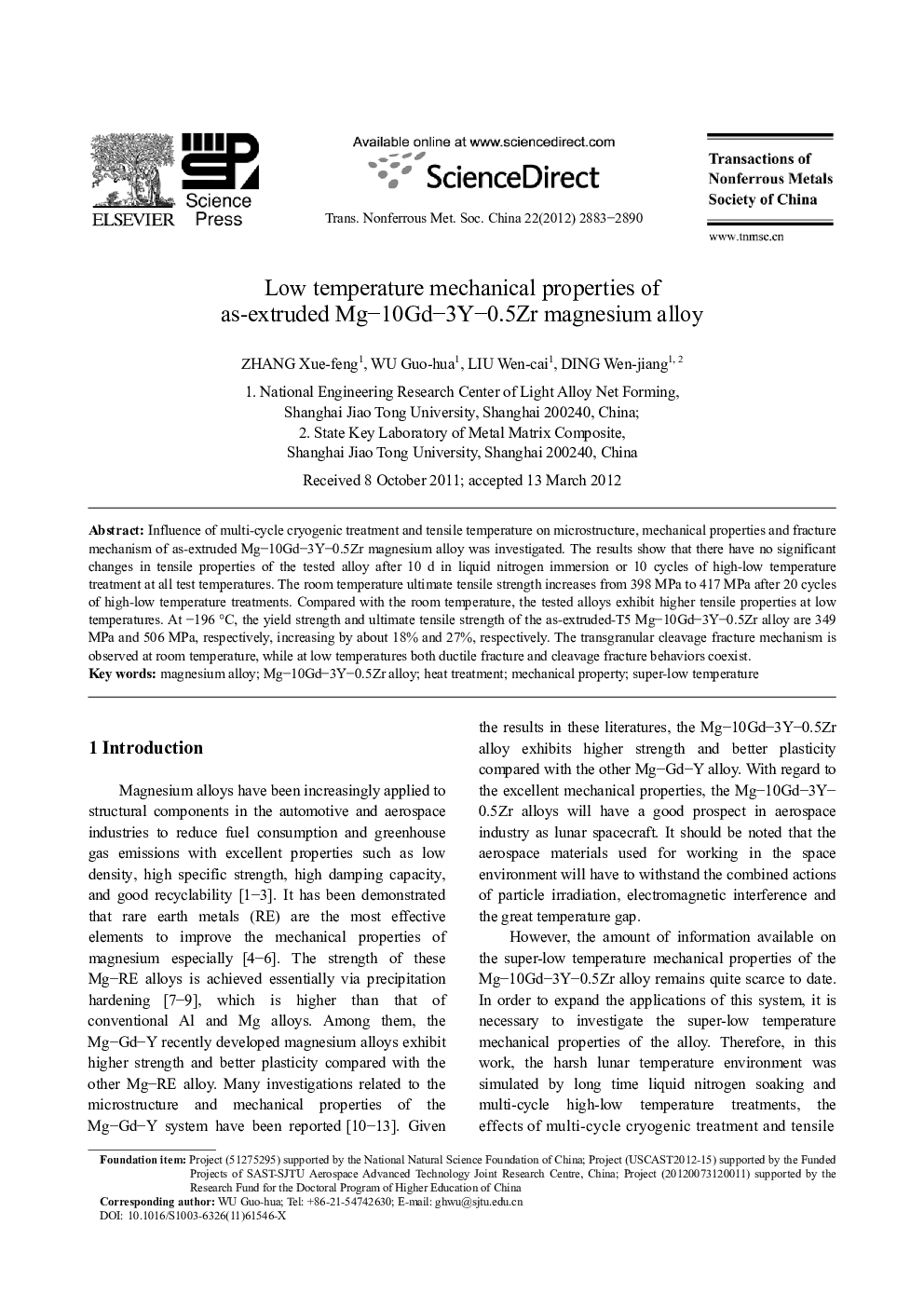| Article ID | Journal | Published Year | Pages | File Type |
|---|---|---|---|---|
| 1637042 | Transactions of Nonferrous Metals Society of China | 2012 | 8 Pages |
Influence of multi-cycle cryogenic treatment and tensile temperature on microstructure, mechanical properties and fracture mechanism of as-extruded Mg–10Gd–3Y–0.5Zr magnesium alloy was investigated. The results show that there have no significant changes in tensile properties of the tested alloy after 10 d in liquid nitrogen immersion or 10 cycles of high-low temperature treatment at all test temperatures. The room temperature ultimate tensile strength increases from 398 MPa to 417 MPa after 20 cycles of high-low temperature treatments. Compared with the room temperature, the tested alloys exhibit higher tensile properties at low temperatures. At −196 °C, the yield strength and ultimate tensile strength of the as-extruded-T5 Mg–10Gd–3Y–0.5Zr alloy are 349 MPa and 506 MPa, respectively, increasing by about 18% and 27%, respectively. The transgranular cleavage fracture mechanism is observed at room temperature, while at low temperatures both ductile fracture and cleavage fracture behaviors coexist.
